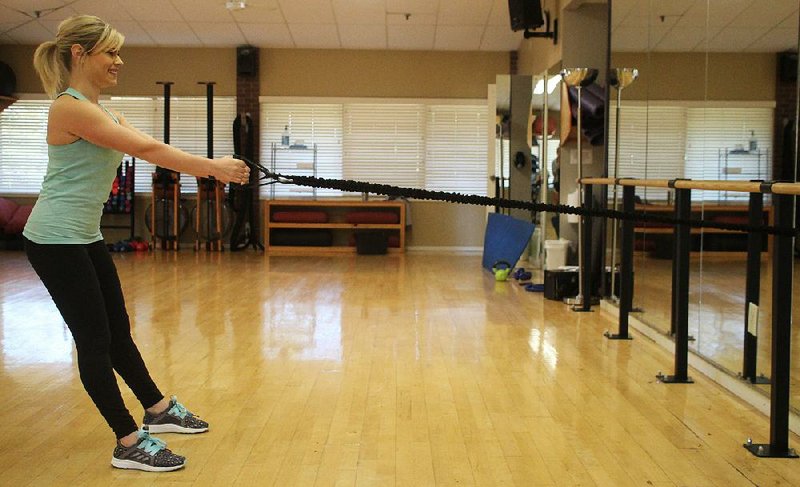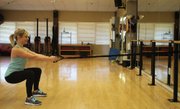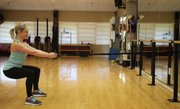We don't have to pump iron to grow stronger. Strength training can use lots of things for resistance.
Dumbbells and barbells will get the job done, but they tend to be cumbersome, and they intimidate new exercisers.
This week, I'll present my top three alternate sources of resistance and an exercise featuring one of the most versatile strengthening tools on the market.
Forty years ago, resistance training meant iron dumbbells and barbells along with a handful of rudimentary machines that more closely resembled torture chambers than exercise equipment. Fast forward to 2017, where we still use dumbbells and barbells, although they are coated in a rubberized material. But today we augment our workouts with innovative equipment.
TRX systems, resistance bands and "selectorized" machines let the user set the movement pattern during strength work, and they are just a few of many resistance options we have available. Each is unique and applicable to a different type of activity, and each requires some expertise or at least understanding from the exerciser.
The TRX system is an outstanding invention that allows significant resistance to be applied using body weight and gravity alone. Given a single anchor point, exercisers have the ability to complete an entire strength workout without any additional equipment.
There is almost no limit to the intensity level of any exercise performed on the TRX system, which makes the product very appealing to more experienced fitness enthusiasts.
If I'm planning a home gym, it's the first piece of equipment I choose.
Resistance bands have been around for many years, but today's products are far superior to their predecessors. The handles are more comfortable, the bands are more durable, and there are many more gradations of stiffness from which to choose.
Resistance bands are great for travel workouts, group exercise training and low-intensity home exercise. Like the TRX, resistance bands require the user to orient the body in relation to an anchor point.
Possibly the most significant innovations today are these selectorized machines. The old school machines of the 1970s pale in comparison. My favorite models include an element of freedom for the user so you define the movement pattern. In other words, you can perform a given exercise at almost any angle.
Lat pulldowns, seated rows, chest flys and any other movement can be performed at any angle without making all sorts of adjustments. These machines don't "trap" you into a prescribed motion.
This week's exercise tests the durability of today's stretch bands by asking them to support a high percentage of the body's weight. The Stretch Band Pulse Squat is appropriate for all fitness levels and can be performed almost anywhere.
1. Select a medium resistance stretch band and anchor it to a point about 3 feet off the floor.
2. Grasp the handles of the stretch band, one in each hand.
3. Step back from the anchor point until the band stretches taut. Your feet should be just beyond shoulder-width apart.
4. Squat down so that your knees and hips are both at 90-degree angles.
5. Pulse up and down, moving 6 to 12 inches with each repetition.
6. Perform two sets of 25 for a great burn.
The Stretch Band Pulse Squat is a great way to warm up the lower body before activity. Those who enjoy running outdoors in colder weather may find the exercise particularly useful for the pre-run ritual. The movement will move blood to the quadriceps and make that first half-mile just a little less rickety. Enjoy!
Matt Parrott has a doctorate in education (sport studies) and a master's in kinesiology and is certified by the American College of Sports Medicine.
vballtop@aol.com
ActiveStyle on 11/27/2017


